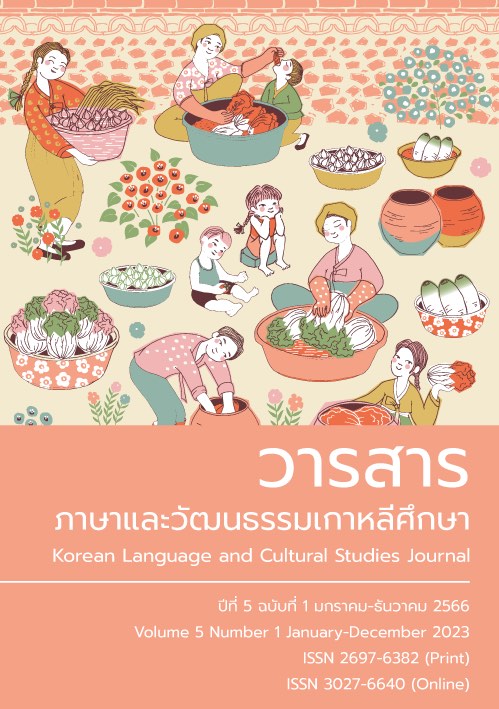The Study of Contextual Meaning of The Name “訓民正音” through The Relevant Articles Recorded in《朝鮮王朝實錄》
Main Article Content
Abstract
This article aims to explore the historical background of the period when the term “訓民正音” was created in order to understand the meaning of the name “訓民正音”. To consider the social context of the era and take a bird's-eye view of the social and cultural background at the time of “訓民正音” emergence in order to provide the fundamental data for the study of “한글생활사”. Considering the relationship of “訓民正音” and “諺文”, this research mainly focuses on the historical event “Presentation of petition against 諺文”. It was an important event at that time which related to the creation of new calligraphy. This research also investigated the processes of “Invention”, “Presentation of petition” and “Proclamation” recorded in the “The True Record of the Joseon Dynasty chronicles《朝鮮王朝實錄》”
Analyzing the related contexts of the messages recorded in the chronicles, it was found that “諺文” was a name that better expressed King Sejong's intentions and wills than “訓民正音”, but “訓民正音” was a name that closed to the perspective of the scripts presented by the petitioners who opposed to the use of newly invented scripts. After King Sejong had to face the petition, therefore, the name “訓民正音” was used instead of “諺文” in order to compromise with the nobles.
Article Details
References
ACTEL. (2023). What Are the World-Readiness Standards?. Retrieved May 26, 2023, from https://www.actfl.org/educator-resources/world-readiness- standards-for-learning-languages
강신항. (2007). 國語學散稿. 월인.
강창석. (2012). 훈민정음 頒布와 관련한 몇 가지 문제. 개신어문연구, 35, 5-30.
구본관. (2009). 국어생활사 교육 내용. 문법교육, 10, 1-48.
국립한글박물관. (2018). 훈민정음 표준 해설서(국문). 국립한글박물관.
국립한글박물관. (2018). 훈민정음 표준 해설서(영문). 국립한글박물관.
국사편찬위원회. (n.d.). 朝鮮王朝實錄. Retrived May 26, 2023, from https://sillok. history.go.kr/main/main.do
김영미. (2015). 훈민정음•정음•언문의 명칭 의미. 인문과학연구, 44, 211-233.
김유범. (2009). 국어생활사 교육의 방법과 교재. 문법교육, 10, 49-64.
김주필. (2014). 최만리 등 집현전 학사들이 올린 甲子上疏文의 내용과 의미. 진단학보, 122, 145-174.
박형우. (2009). 국어생활사 교육의 평가 방법에 대한 시고. 문법교육, 10, 145-173.
이동석. (2017). 훈민정음 반포와 한글날에 대하여. 한국어문교육, 23, 233-259.
장윤희. (2009). 국어생활사 교육의 성격과 목표. 문법교육, 10, 287-311.
조태린. (2009). 국어생활사 연구의 사회언어학적 요소. 문법교육, 10, 347-368.
한국학중앙연구원. (1991). 한국민족문화대백과사전. Retrived May 26, 2023, from https://encykorea.aks.ac.kr/
홍윤표. (2005). 訓民正音의 '象形而字倣古篆'에 대하여. 국어학, 46, 53-66.
홍현보. (2012). 우리 사전의 왜곡된 ‘언문’ 뜻풀이에 관한 연구. 한글, 298, 51-105.
漢典. Retrived May 26, 2023, from https://www.zdic.net


